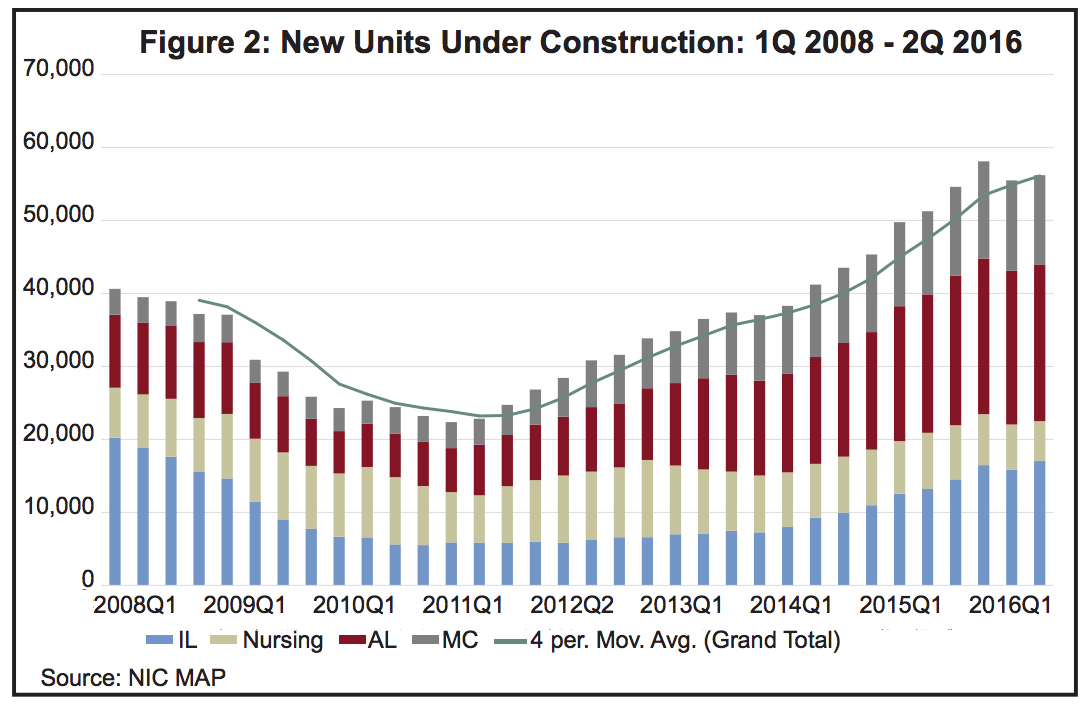
As the baby boomer generation enters retirement, senior living providers are realizing that residents who are not necessarily considered to have cognitive impairment may very well need some level of memory care programming and related assistance. As such, is memory care becoming a necessary component of all seniors housing and care facilities? A look at current development trends coupled with rapidly changing demographics suggests the answer is yes.
1. Demographics. According to the Alzheimer’s Association, one in eight people aged more than 65 years has some form of dementia. Further, nearly half of seniors aged 85 or more years and older have it. Compounding this trend is the fact that by 2030, the population of seniors is expected to double, reaching 74 million.
2. Industry trends. According to a survey of nearly 300 leaders at seniors housing and care facilities, a majority of respondents (61%) believed that Alzheimer’s/memory care would experience the most growth in 2016 as compared with the rest of the acuity spectrum. Further, when asked which elements of the continuum of care they have construction projects planned for, the top two answers were assisted living and Alzheimer’s/memory care, at 41% and 40% respectively.
 Looking to 2017, the National Investment Center for Seniors Housing & Care forecasts an increase in the construction of seniors housing and care facilities in concentrated markets. Much of the product that will be coming online in the foreseeable future caters to seniors with higher acuity levels, such as memory care residents, per the accompanying chart.
Looking to 2017, the National Investment Center for Seniors Housing & Care forecasts an increase in the construction of seniors housing and care facilities in concentrated markets. Much of the product that will be coming online in the foreseeable future caters to seniors with higher acuity levels, such as memory care residents, per the accompanying chart.
3. Medical and technological advances. As medical advances and technology continue to develop, seniors have the ability to be cared for at home, or take care of themselves, for a longer amount of time than in the past. Therefore, by the time potential residents think about moving into senior living communities, it often is because they don’t have another option. Older adults increasingly are choosing senior living communities as a last resort once they no longer can remain at home. Thus, the acuity level of seniors entering these communities has increased significantly from where it has been historically. In many cases, seniors are forced to enter communities due to memory care-related issues such as wandering or loss of mental cognition.
4. Financial opportunity. Seniors housing and care providers that fail to provide memory care services stand to lose residents to competitors that do. If a resident at an assisted living community begins to need memory support services but the community does not offer it, then the resident likely will have to move to a new community. Or, if the resident stays, then expenses to care for him or her will be much higher than for a typical assisted living resident, thus negatively affecting a company’s bottom line.
5. No time to waste. Caring for higher-acuity residents is not simple. Providing memory care-related services necessitates increased staff training and labor costs, as well as increased regulatory oversight. The training and development of staff is a critical component to success in the memory care segment, and those operators that are ahead of the curve in this respect will benefit in the future.
Simply put, the market for quality affordable memory care is strong and growing. Continuing and accelerating the recent good work by those in the industry to increase memory care services across the continuum of care is essential.
Jessica Rosenberg is an associate at financial advice and solutions firm Lancaster Pollard in Columbus, OH. She may be reached at [email protected].
McKnight’s Senior Living welcomes guest columns on subjects of value to the industry. Please see our submission guidelines for more information.




